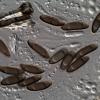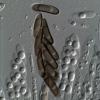
15-12-2025 21:11
 Hardware Tony
Hardware Tony
Small clavate hairs, negative croziers and IKI bb

15-12-2025 15:54
 Johan Boonefaes
Johan Boonefaes
Unknown anamorph found on the ground in coastal sa

15-12-2025 15:48
 Danny Newman
Danny Newman
Melanospora cf. lagenaria on old, rotting, fallen

15-12-2025 07:05
 Danny Newman
Danny Newman
Pseudosclerococcum golindoi (det: Zotto)near Cosb

15-12-2025 11:49
 Danny Newman
Danny Newman
ITS sequences from the following two collections B

15-12-2025 07:09
 Danny Newman
Danny Newman
indet. Rutstroemiaceae sp. on unk. fallen leavesMc

15-12-2025 12:34
 Danny Newman
Danny Newman
indet. Rhytismataceae on oak leafnear Purchase Roa

09-12-2025 12:06
 Andgelo Mombert
Andgelo Mombert
Bonjour,Je recherche l'article concernant Hypobryo
Endoxyla from Cornwall?
Paul Cannon,
29-12-2014 18:21
See http://fungi.myspecies.info/all-fungi/endoxyla-sp-p1717 for a full description and more images.
Jacques Fournier,
29-12-2014 19:10

Re : Endoxyla from Cornwall?
Hi Paul,
good to hear you don't give up mycology because of the coming New Year celebrations!
Your tricky fungus indeed does not key out in Untereiner's key. I wonder if ascospores are really septate of if the septum is not just the boundary between two guttules. As they apparently lack a germ pore and are in fusiform asci, Endoxyla might not be the good genus. Because of the long stipitate asci, I would consider some diatrypaceous genus like Barrmaelia, though very rotten wood is not a typical substrate. Is the wood surface somewaht blackened?
I also discovered on your website your unnamed Endoxyla with ascospores sometimes stuck by pairs. Did you consider Synaptospora, a genus where such ascospore arrangement occurs?
Cornwall is definitely a fungus-rich region, you are fortunate!
All my best for 2015!
Jacques
good to hear you don't give up mycology because of the coming New Year celebrations!
Your tricky fungus indeed does not key out in Untereiner's key. I wonder if ascospores are really septate of if the septum is not just the boundary between two guttules. As they apparently lack a germ pore and are in fusiform asci, Endoxyla might not be the good genus. Because of the long stipitate asci, I would consider some diatrypaceous genus like Barrmaelia, though very rotten wood is not a typical substrate. Is the wood surface somewaht blackened?
I also discovered on your website your unnamed Endoxyla with ascospores sometimes stuck by pairs. Did you consider Synaptospora, a genus where such ascospore arrangement occurs?
Cornwall is definitely a fungus-rich region, you are fortunate!
All my best for 2015!
Jacques
Paul Cannon,
29-12-2014 19:36
Re : Endoxyla from Cornwall?
No, there is no evidence of blackening on the surface, which tends to rule out Barrmaelia (and also Clypeosphaeria which I had considered). I think the septa are genuine, but it is strange that so few of the spores develop them. The lack of a germ pore argues against Endoxyla as you say, but some of the literature suggests that they are very inconspicuous and may not always be present. The material I have is sparse and we will need to find more.
The other "Endoxyla" was also found in southern Norway during our visit to Bjorn. I don't think this is a Synaptospora, but there is an apparently new one of these from Cornwall as well - see http://fungi.myspecies.info/all-fungi/synaptospora-sp-p1437
Thank you for all your suggestions, you're right that Cornwall is a rather special place for fungi. We must tempt you to visit some day....
Best wishes, Paul
The other "Endoxyla" was also found in southern Norway during our visit to Bjorn. I don't think this is a Synaptospora, but there is an apparently new one of these from Cornwall as well - see http://fungi.myspecies.info/all-fungi/synaptospora-sp-p1437
Thank you for all your suggestions, you're right that Cornwall is a rather special place for fungi. We must tempt you to visit some day....
Best wishes, Paul

